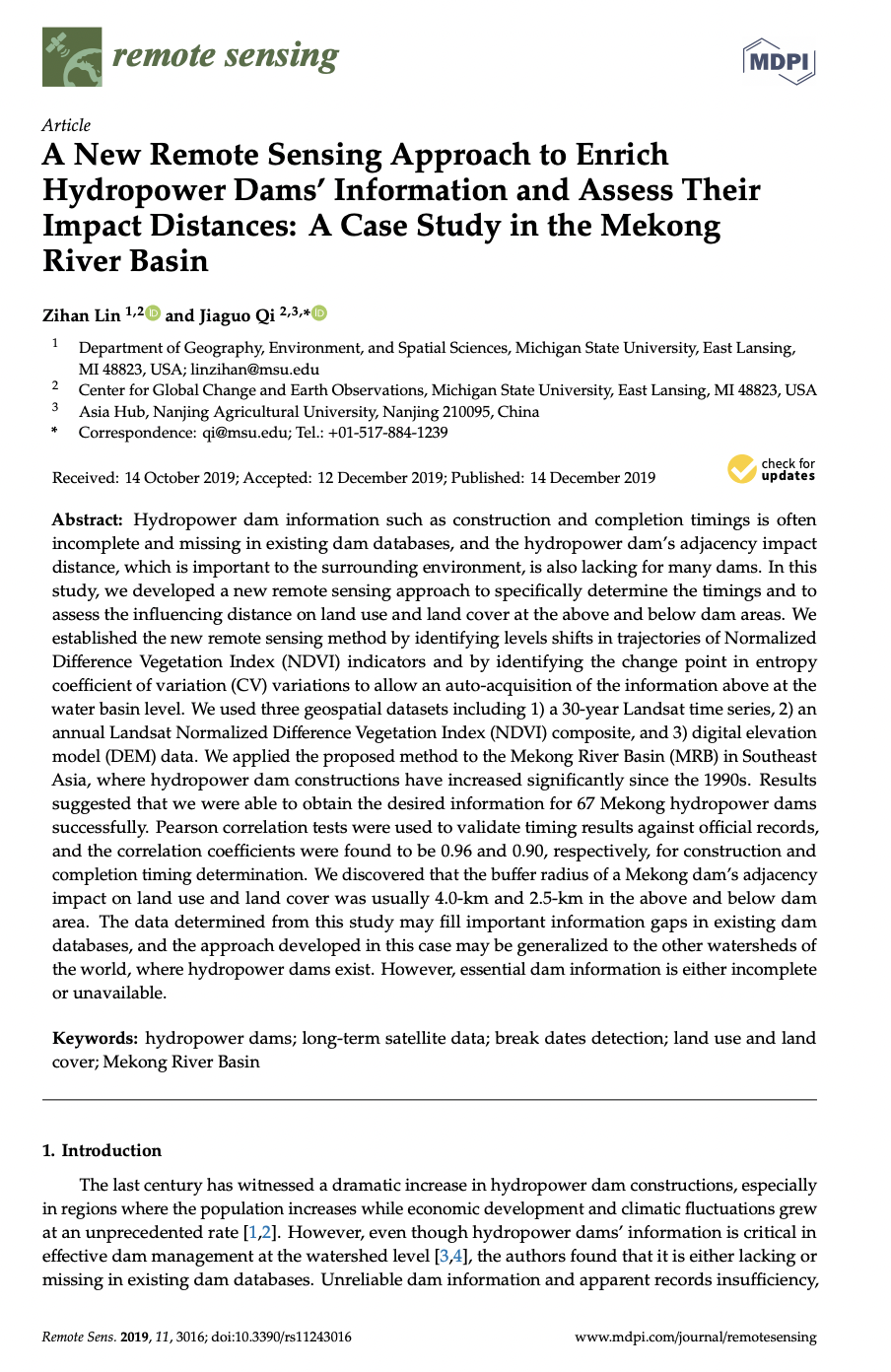
Keyword(s)
Author(s)
Zihan Lin [a][b], Jiaguo Qi [b][c]
Country(ies)
Publisher
Published Date
Access
DOI
[a] Department of Geography, Environment, and Spatial Sciences, Michigan State University, East Lansing, MI 48823, USA
[b] Center for Global Change and Earth Observations, Michigan State University, East Lansing, MI 48823, USA
[c] Asia Hub, Nanjing Agricultural University, Nanjing 210095, China
Hydropower dam information such as construction and completion timings is often incomplete and missing in existing dam databases, and the hydropower dam’s adjacency impact distance, which is important to the surrounding environment, is also lacking for many dams. In this study, we developed a new remote sensing approach to specifically determine the timings and to assess the influencing distance on land use and land cover at the above and below dam areas. We established the new remote sensing method by identifying levels shifts in trajectories of Normalized Difference Vegetation Index (NDVI) indicators and by identifying the change point in entropy coefficient of variation (CV) variations to allow an auto-acquisition of the information above at the water basin level. We used three geospatial datasets including 1) a 30-year Landsat time series, 2) an annual Landsat Normalized Difference Vegetation Index (NDVI) composite, and 3) digital elevation model (DEM) data. We applied the proposed method to the Mekong River Basin (MRB) in Southeast Asia, where hydropower dam constructions have increased significantly since the 1990s. Results suggested that we were able to obtain the desired information for 67 Mekong hydropower dams successfully. Pearson correlation tests were used to validate timing results against official records, and the correlation coefficients were found to be 0.96 and 0.90, respectively, for construction and completion timing determination. We discovered that the buffer radius of a Mekong dam’s adjacency impact on land use and land cover was usually 4.0-km and 2.5-km in the above and below dam area. The data determined from this study may fill important information gaps in existing dam databases, and the approach developed in this case may be generalized to the other watersheds of the world, where hydropower dams exist. However, essential dam information is either incomplete or unavailable.
Cite:
Lin, Z.; Qi, J. A New Remote Sensing Approach to Enrich Hydropower Dams’ Information and Assess Their Impact Distances: A Case Study in the Mekong River Basin. Remote Sens. 2019, 11, 3016. https://doi.org/10.3390/rs11243016